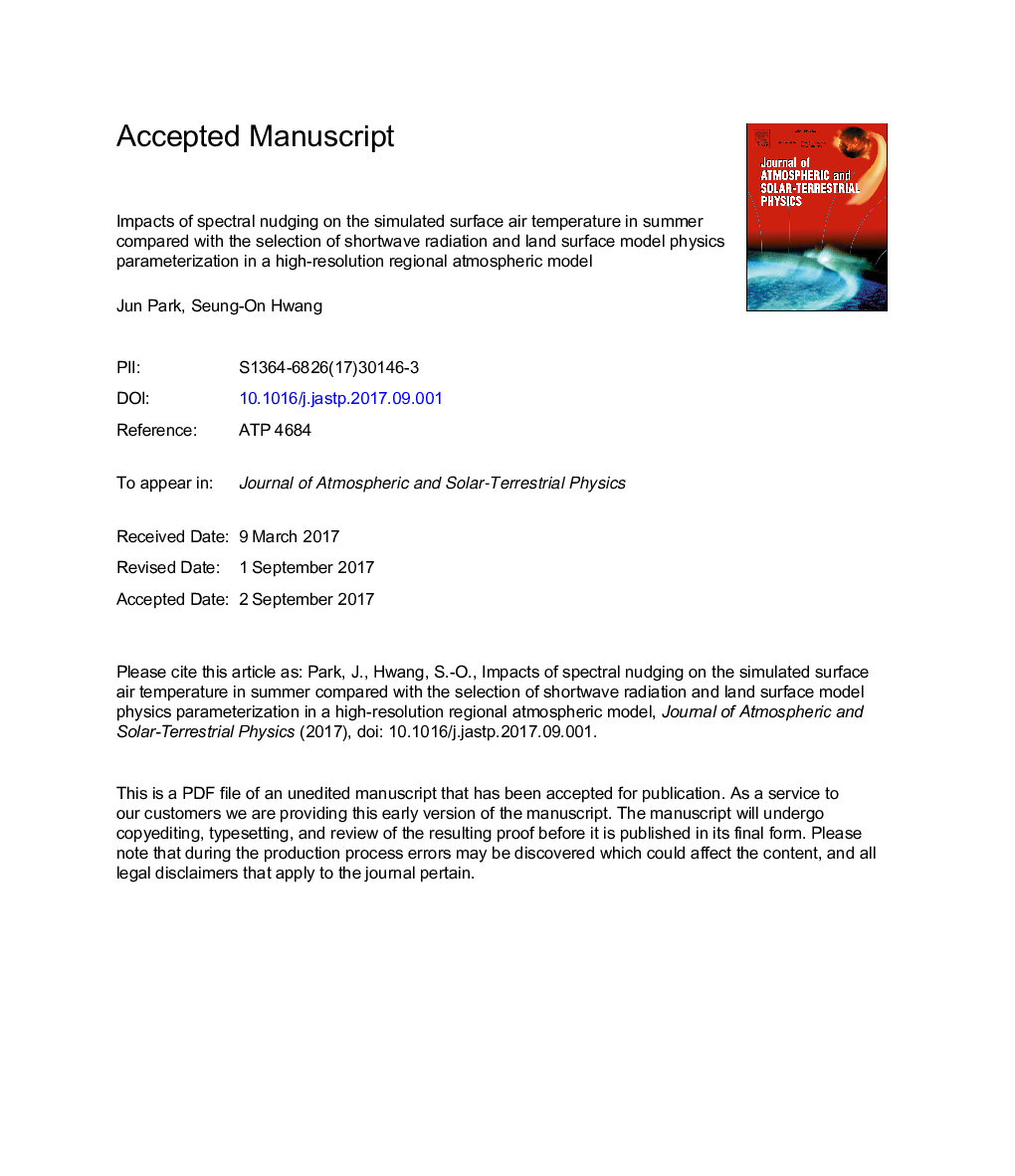| Article ID | Journal | Published Year | Pages | File Type |
|---|---|---|---|---|
| 5487479 | Journal of Atmospheric and Solar-Terrestrial Physics | 2017 | 37 Pages |
Abstract
The impact of a spectral nudging technique for the dynamical downscaling of the summer surface air temperature in a high-resolution regional atmospheric model is assessed. The performance of this technique is measured by comparing 16 analysis-driven simulation sets of physical parameterization combinations of two shortwave radiation and four land surface model schemes of the model, which are known to be crucial for the simulation of the surface air temperature. It is found that the application of spectral nudging to the outermost domain has a greater impact on the regional climate than any combination of shortwave radiation and land surface model physics schemes. The optimal choice of two model physics parameterizations is helpful for obtaining more realistic spatiotemporal distributions of land surface variables such as the surface air temperature, precipitation, and surface fluxes. However, employing spectral nudging adds more value to the results; the improvement is greater than using sophisticated shortwave radiation and land surface model physical parameterizations. This result indicates that spectral nudging applied to the outermost domain provides a more accurate lateral boundary condition to the innermost domain when forced by analysis data by securing the consistency with large-scale forcing over a regional domain. This consequently indirectly helps two physical parameterizations to produce small-scale features closer to the observed values, leading to a better representation of the surface air temperature in a high-resolution downscaled climate.
Related Topics
Physical Sciences and Engineering
Earth and Planetary Sciences
Geophysics
Authors
Jun Park, Seung-On Hwang,
